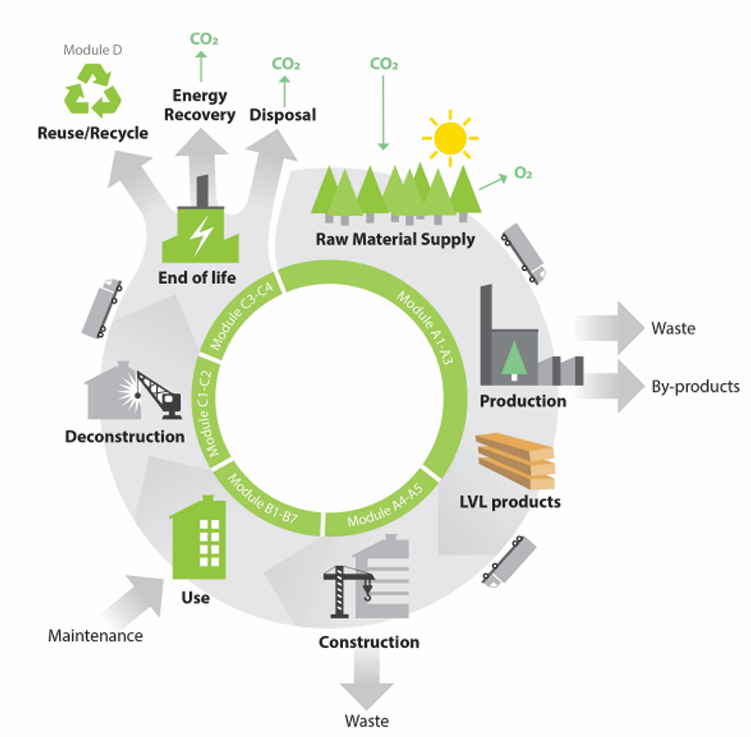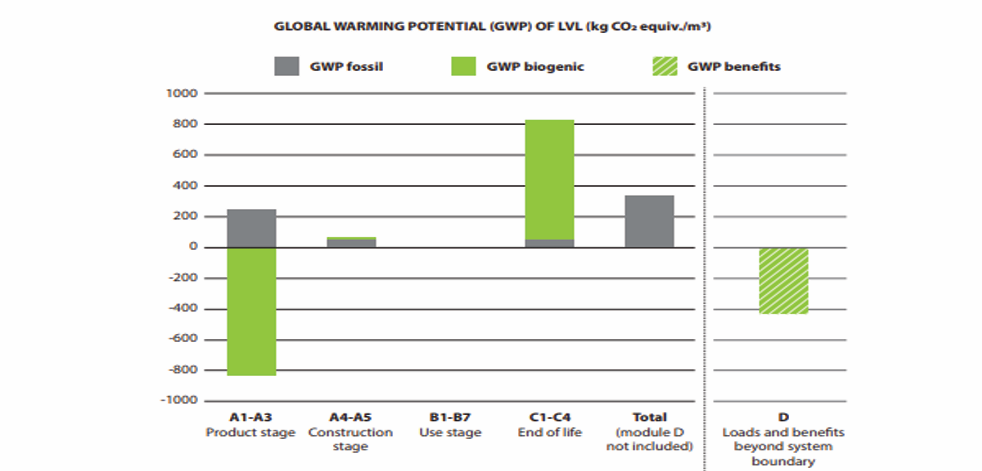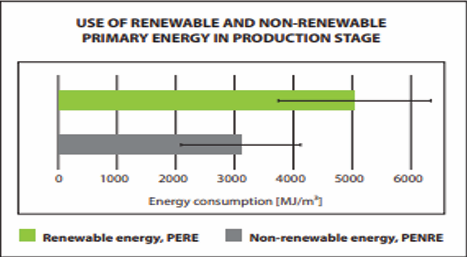
Innovation
Utilizing advanced technology for laminated veneer lumber (LVL) production at the Akrawood facility in Thailand.

LVL AS A CONSTRUCTION MATERIAL

- GLOBAL WARMING IMPACT OF LVL
In the manufacture of LVL, a large share of renewable energy is used (see figure 1.18) ,Resulting in lower fossil greenhouse gas emission and global warming potential compared to other building materials. In addition, LVL stores biogenic carbon. Which constitutes about one half of the dry weight of the wood. Biogenic carbon remains in the LVL throughout its lifetime until it is released back to the atmosphere to be absorbed by the next generation of growing trees.
- The Global warming potential of LVL when used in a load-bearing structure of a building has been determined by LVL producers as follows.
- Raw metirial extraction and energy use are similar in different production units, but diferent energy mixes are used, depending on the unit and country. Energy mix effect greenhouse gas emission of the production stage. (modules A1-3) Biogenic carbon content is given separately.
- Construction stage (modules A 4-5) covers transportation to the central European market and normal construction works.
- Use sage (B1-7) is considerate negligible
- End of life stage (C1-4) seniors consider utilization of L as a source of energy
- (Module D), other benefits, originate mainly from bioenergy substitution effect. Compare it to typical local energy mix, when it is used for bioenergy at end of life.
Figure 1.18
Primary energy renewable, and non-renewable use in manufacturing stage (A1-A3) of LVL

Biogenic global warming potential is the sum of stored Biogenic carbon in the production stage and release of Biogenic carbon in the end of life stage. The sum is close to zero for the whole life cycle.
Consolidated results for fossil global warming potential show that the protection stage (A1-3)
considerate 90% of the results (Figure 1.19). The construction stage (A4-5) considerate 10%, and end of life stage (C1-4) constitutes 2.5% of the fossil GWP. in Module D the GWP. benefits are shown as the amount of fossil fuels substituted by biomass energy.